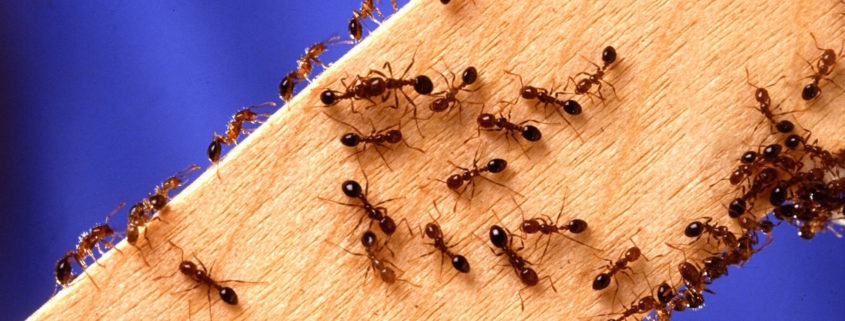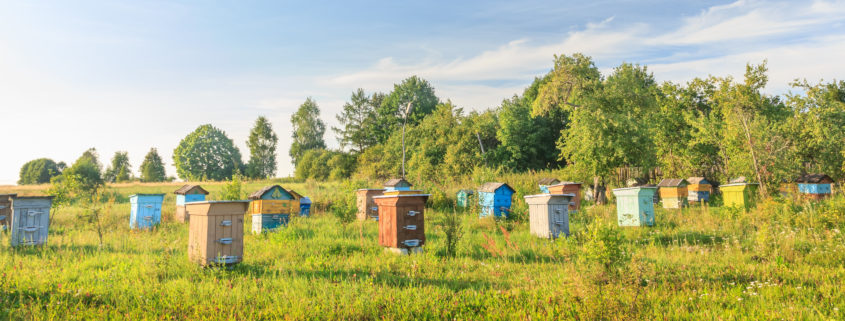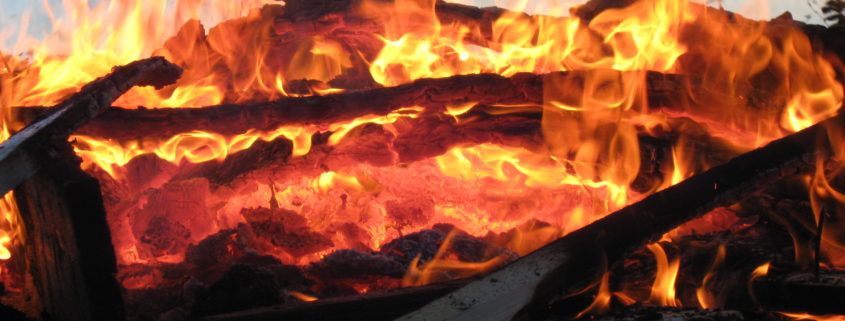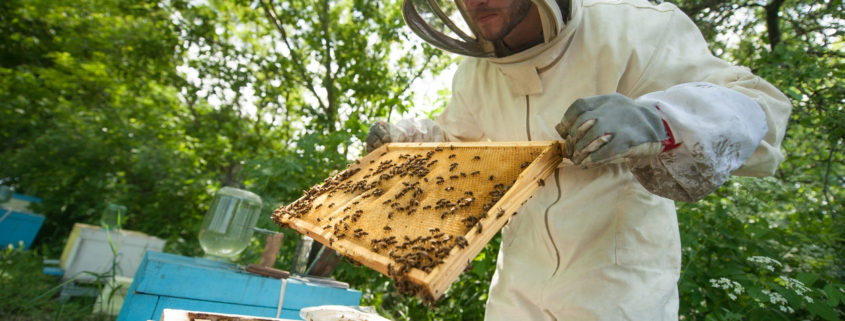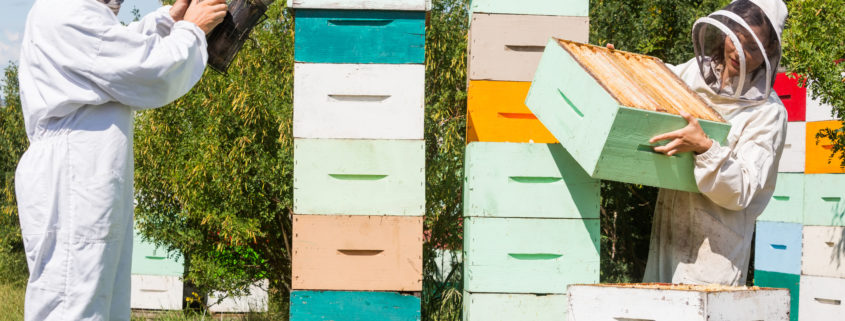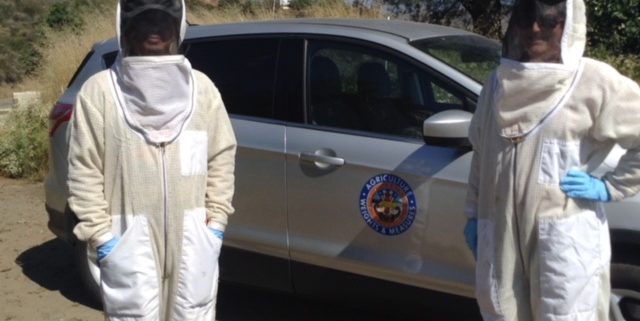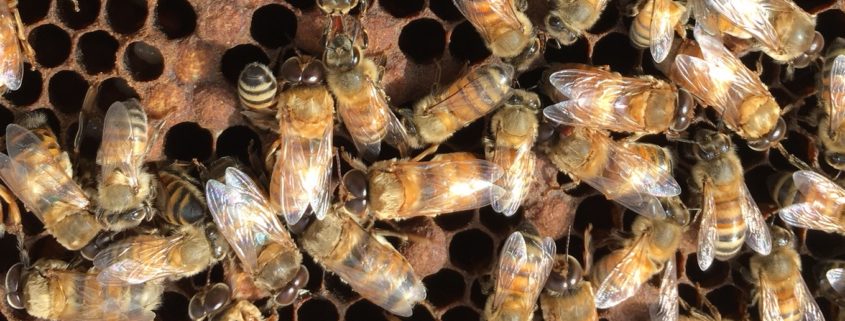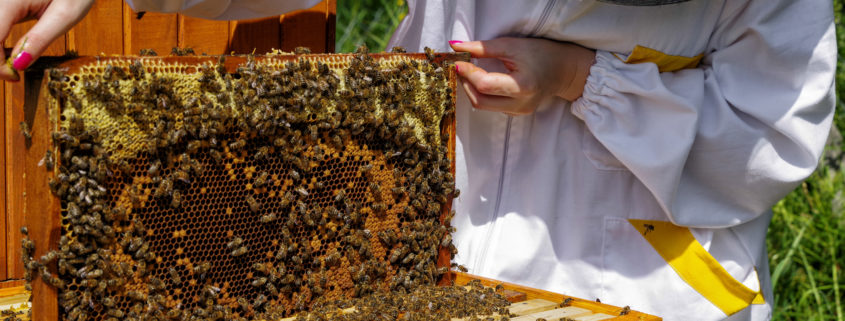August typically falls in the center of the summer “fire season” in California. After months of dry weather and relentless heat, chaparral turns to tinder. And as we have seen in the news, it doesn’t take much to turn acres of dry brush into an unstoppable inferno.
Fire recently overtook one of Wildflower Meadows’ apiaries. Fortunately, our loss was minimal, with all but one colony surviving. Thanks to the encouragement of our local county bee inspectors, who had instructed us to maintain good weed control around our apiaries, we had previously trimmed away all of the brush and weeds, and created natural firebreaks around all of our apiaries. That, plus the determined efforts of Cal Fire, enabled the fire to pass directly over and around the apiary without causing significant damage.
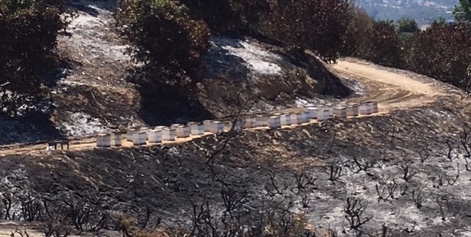
When we arrived at the apiary, the entire area nearby was still smoldering. The fire destroyed the surrounding avocado grove, with ash everywhere. We really couldn’t even access our colonies because the firefighters had sprayed so much water onto the colonies that the ground beneath them had turned into a swamp of mud and ash!
When a fire approaches an apiary, the heavy smoke causes the bees to retreat into their colonies and load their bellies with honey in preparation to abscond. This is the same effect that a beekeeper simulates by smoking a colony in a normal hive inspection. (This behavior is somewhat analogous to humans, who when facing an impending fire, run into their homes to gather their precious belongings before evacuating.)
In a normal fire situation, the bees might have absconded as the flames and heat rapidly overtook the area. However, due to the deluge of water from the firefighters, the bees really had no choice but to stay put inside the hives. The water kept them cool and safe, and somewhat locked in.
The bees themselves seemed to survive without any problems. When we later inspected the colonies the bees were both calm and strong. The firefighters reported that the bees were “well behaved” and gentle, never harassing any of the firefighting crews as they made repeated return visits to the area. Perhaps they were appreciative, like us, of the brave efforts of the firefighters to save them. We rewarded each colony with a gallon of syrup and a pollen substitute patty.
Unfortunately, however, one colony did not survive.
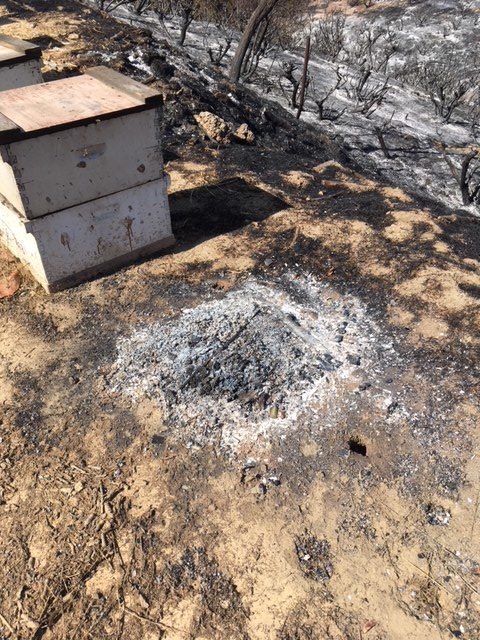
When a colony catches fire, it quickly becomes an inferno of wax and wood. The air space between the frames doesn’t help either, as it enables the fire to gain a steady flow of oxygen. By the time a fire finishes its work on a colony, typically all that remains is a pile of ash and nails. If you look closely at the above photo, you can see the remnants of our screened bottom board.
We would like to take this opportunity to issue a special thank you to the firefighters of Cal Fire, particularly to the bee-loving crew who saved our apiary!


